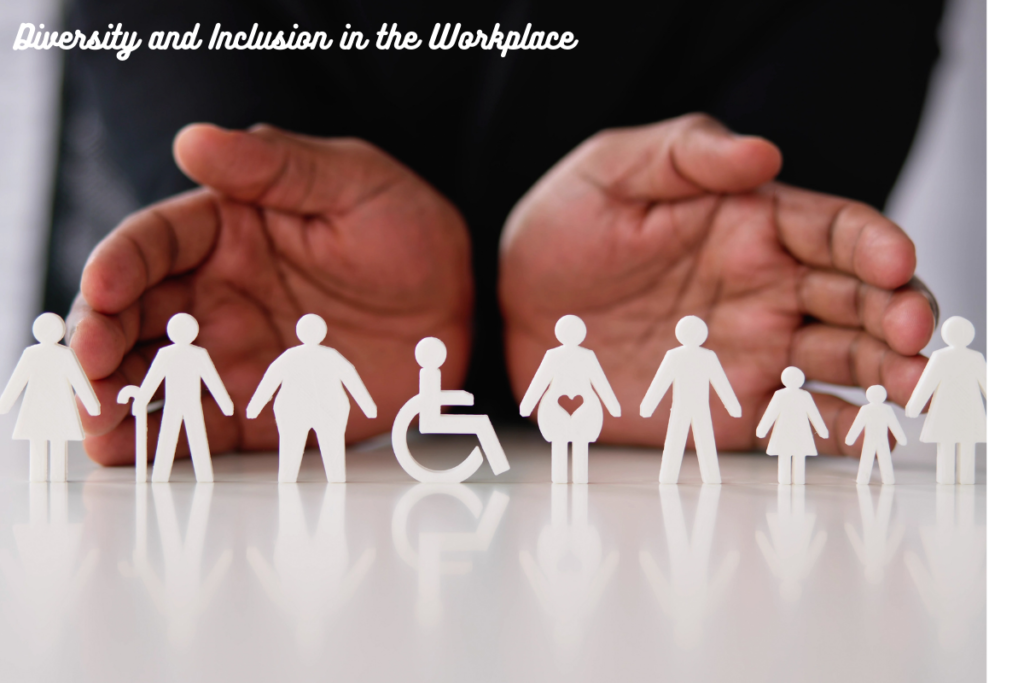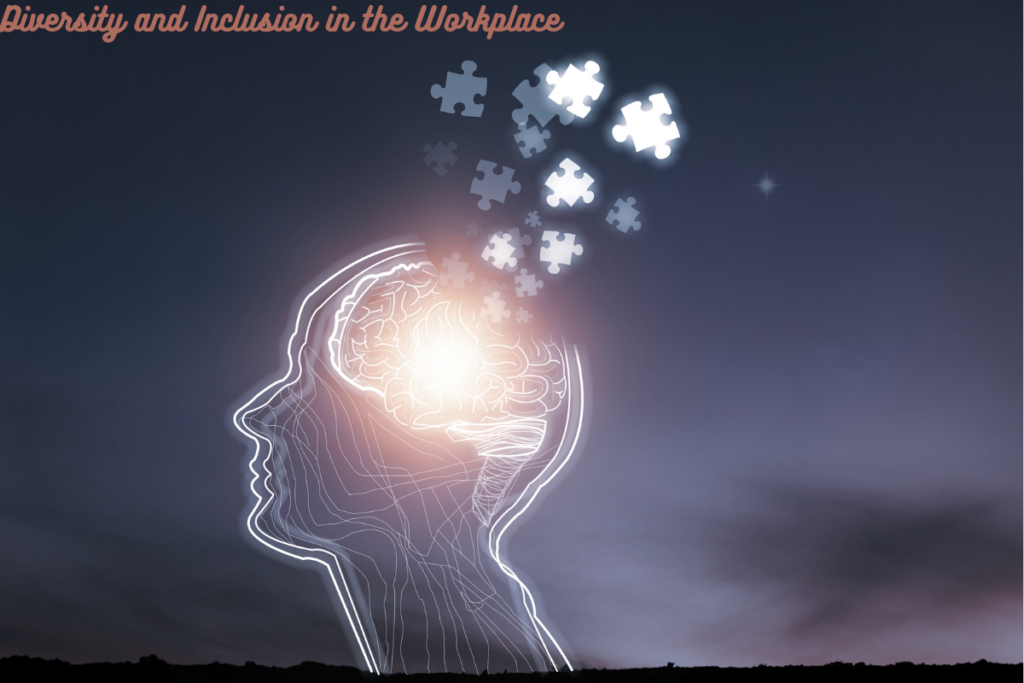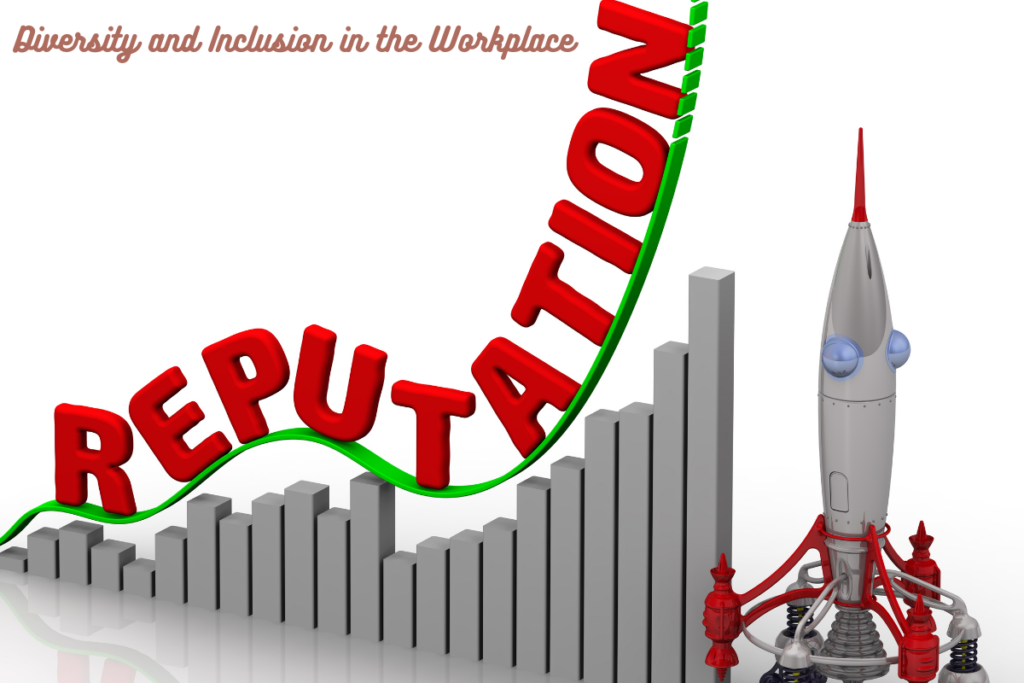Introduction:

Diversity and inclusion at work involves valuing and welcoming people with varied backgrounds, experiences, and perspectives. Organizations can get a lot of benefits from accepting diversity and encouraging inclusion, such as more new ideas, better decisions, more engaged employees, and a better image.
Best practices for diversity and inclusion include making rules and programs that treat all workers equally and with respect, no matter what makes them different. This can include hiring people from a variety of backgrounds, giving workers training on diversity, setting up employee resource groups, and making sure that everyone has the same chances to move up in their careers.
Online training programs, diversity consultants, industry conferences, and diversity and inclusion toolkits from groups like SHRM (Society for Human Resource Management) and Catalyst are just some of the resources that are out there to help organizations improve diversity and inclusion in the workplace.
Businesses can make the workplace more welcoming and diverse by putting diversity and inclusion at the top of their list of priorities. This not only helps workers but also helps the business succeed as a whole.
Table of Contents
Why we need "Diversity and Inclusion in the Workplace" ?:

Today, many companies value “Diversity and Inclusion in the Workplace”. Race, ethnicity, gender, age, sexual orientation, handicap, and cultural background are among the factors that make each employee unique. However, inclusion involves creating a friendly and collaborative environment where everyone feels respected, appreciated, and able to do their best job.
Embracing **Diversity and inclusion in the workplace: Benefits and challenges** is smart business and the correct thing to do. Diversity and inclusion can boost creativity, innovation, problem-solving, employee engagement and loyalty, decision-making, and market share.”
To improve diversity and inclusion, employers can do things like hire people from a variety of backgrounds, offer diversity training, help people learn about and understand other cultures and points of view, set up diversity leadership roles, and make sure that all of their employees have access to diverse and welcoming resource groups. Diversity and inclusion can make employees more dynamic, engaged, and productive. This will also help all employees feel like they fit and are treated equally.
Diversity and inclusion and Its Importance:
Encouragement of diversity and inclusion in the workplace can have several advantages for employees as well as for the business overall. **According to a Harvard Business Review analysis, because they are better at reducing risk and weighing opposing viewpoints, diverse teams may make choices faster than homogeneous teams. This variety of ideas enables companies to be more flexible and adaptive in the fast changing environment of today, therefore improving their competitive edge and producing better commercial results.** Examining the keyword “Diversity and Inclusion in the Workplace” more closely finds the following points.
More innovative ideas:

When workers from different backgrounds work together, they bring a lot of different ideas, experiences, and points of view to the table. This variety of ideas can spark creativity and new ideas, which can help the company move forward by finding new ways to solve tough problems.
Making Better Choices:
People can make better decisions when they work in places where everyone is welcome and their opinions are valued. Companies can make choices that are more representative of their wide range of customers if they take into account different points of view and experiences.
Better engagement of employees:
Feeling respected and included at work boosts motivation and engagement. Creating a culture of inclusion makes workers feel like they belong and makes them more loyal, which leads to more work getting done, better teamwork, and overall job satisfaction.
Top Tips for Inclusion and Diversity:
In order to effectively promote “diversity and inclusion in the workplace,” it is essential to employ a wide range of strategies.**It has been demonstrated by research conducted by McKinsey & Company that businesses that are in the top quartile for gender diversity on executive teams have a 25% greater likelihood of outperforming their competitors in terms of profitability. Those that have teams that are comprised of people from a variety of ethnic backgrounds are also 36% more likely to achieve above-average profitability**. The following is a list of the most important strategies:
Hiring practices that are inclusive:

Companies can be more inclusive when they hire by actively looking for people from different backgrounds, using blind recruitment methods to get rid of bias, and making sure job descriptions don’t include words that might turn off people from certain groups. **Diversity and Inclusion in the Workplace** A company can build a more diverse team by focusing on skills, qualifications, and prospects instead of demographics.
Training on diversity:
Giving diversity training to all levels of workers can help them become more aware of unconscious biases, stereotypes, and small offensive comments. These training programs can teach workers about the value of diversity and inclusion, encourage empathy and understanding, and give them the tools they need to make the workplace a better place for everyone.
Setting up Employee Resource Groups (ERGs):
Groups called Employee Resource Groups are run by employees and are voluntary. They help people with similar identities or interests connect with each other, offer support, and add to the company’s efforts to be more **Diversity and Inclusion in the Workplace** diverse and inclusive. By supporting ERGs with members from a range of groups, companies can give their workers more power, encourage diversity, and show off different points of view.
Building a culture of fairness and respect:
Make a workplace welcoming for everyone, it’s important to build an atmosphere that values and respects differences. This means encouraging open communication, making clear rules about language and behavior, dealing with discrimination or harassment quickly and effectively, and making sure that all workers, no matter their background, have the same **Diversity and Inclusion in the Workplace** chances to learn and grow. To make the workplace more peaceful and useful for everyone, companies can encourage respect and fairness.
Effects on Business:
Putting an emphasis on “diversity and inclusion in the workplace” can have big positive effects on many business results. This is a look into the topic of “Diversity and Inclusion in the Workplace”:
Better performance:

Embracing diversity and working to include everyone can help groups do better. If they feel valued, respected, and included, employees are more engaged, motivated, and devoted. This stronger sense of belonging and power can make people more productive, creative, and improve the general performance of the team.
Better Reputation:

Diversity and inclusion first often get a good name as places to work that are welcoming to everyone. This good image can help the company get top talent from a variety of backgrounds, keep customers from different groups coming back, and set it apart from rivals. **Diversity and Inclusion in the Workplace** A reputation for welcoming and supporting different kinds of people can also help people see your brand positively and lead to long-term success.
Better at keeping employees:
Maintaining a diverse and welcoming workplace may keep employees happy and engaged. **Diversity and Inclusion in the Workplace** When employees feel valued and respected, they are more likely to stay with the company. This lowers the cost of turnover and keeps the knowledge and expertise of the business. Also, welcoming workplaces tend to make employees feel loyal and committed, which means they stay with the company longer and the job market is more stable.
Diverse and inclusive organizations have higher performance, a stronger reputation, and more loyal employees. **Diversity and Inclusion in the Workplace**, This strategic focus can help the company not only within its own walls but also with its connections with other companies and its ability to compete in the market.
Help and Resources:
There are a lot of tools that can help organizations improve their diversity and inclusion efforts. Here is a list of tools that are related to the keyword “Diversity and Inclusion in the Workplace”:
Consultants for diversity:
There professionals called diversity advisers whose job it is to help businesses create and use strategies for **Diversity and Inclusion in the Workplace**. **Diversity in Tech: Bridging the Gap & Creating Opportunities for All** These experts know how to make workplaces more welcoming, do diversity assessments, run training and workshop sessions, and give advice on how to hire and keep diverse employees. Companies can get personalized help and advice from diversity experts on how to make their workplaces more diverse and welcoming.
Programs for online training:
A lots of groups offer online training classes that are all about **Diversity and Inclusion in the Workplace** and acceptance. Some of the things that these programs cover are unconscious bias, cultural competence, inclusive leadership, and making the workplace more welcoming for everyone. Online training lets workers learn at their own pace and easily access tools. This helps companies make their whole workforce more aware of and knowledgeable about diversity and inclusion.
Conferences for business:

Industry events and conferences are great ways for businesses to learn from experts, share the best ways to do things, and connect with other businesses that work in the same area as them to promote diversity and inclusion. A lot of the time, these conferences have keynote speakers, panel discussions, workshops, and smaller groups that meet to talk about different parts of diversity and inclusion at work.
Company can stay up to date on the latest ideas, trends, and ways to promote **Diversity and Inclusion in the Workplace** by going to conferences in their field. Organizations can get useful information, tools, and support to move forward with their diversity and inclusion efforts and make workplaces more fair and welcoming by using resources like diversity advisors, online training programs, and industry conferences.
Making a Culture That Accepts Everyone:
In promoting **Diversity and Inclusion in the Workplace**, it is very important to make sure that all workers feel valued, respected, and free to share their unique ideas and skills. This important point is emphasized here:
Important:
People who work for a company know that their talents, skills, and identities are valued when they feel valued. When you value **Diversity and Inclusion in the Workplace**, you accept and value the differences that each person brings to the table, whether they are their background, experiences, or points of view. Companies can get a lot of different ideas and thoughts that lead to progress and innovation by creating an environment where everyone feels heard and valued.
Due respect:

Respect is the basis of any workplace atmosphere that welcomes everyone. It means treating all workers with respect, fairness, and care, no matter how different they are. **Diversity and Inclusion in the Workplace** Treating everyone with respect means making sure there is no bias, discrimination, or harassment, and that people are rated on their skills and character instead of their identity traits. People are more likely to fully participate, work well with others, and do well in their jobs when they feel respected.
Given power:

Giving workers the freedom, support, and chances to use their unique skills and perspectives is what it means to ‘**Diversity and Inclusion in the Workplace**’ empower them. It means giving them chances to learn, grow, and become leaders, as well as making them feel like they own their work and have control over it. Employees who are given the freedom to make decisions are more likely to be bold, creative, and resilient.
They also are more likely to contribute to the success of the company and feel like they have a purpose in their work. **Diversity and Inclusion in the Workplace** Organizations can make the workplace a better place for everyone to grow and do their best work by stressing how important it is to create a culture where everyone feels valued, respected, and able to make decisions.
Conclusion:
Finally, **Diversity and Inclusion in the Workplace**, are not just trendy terms; they are important parts of an organization’s culture that wants to be successful and forward-thinking. Organizations can get a lot of benefits from promoting diversity and inclusion, such as more new ideas, better decisions, more engaged employees, better performance, and a stronger ability to keep employees.
Key steps to making a workplace where everyone feels valued, respected, and able to share their unique skills and perspectives are using strategies like **Diversity and Inclusion in the Workplace** training, employee resource groups, and hiring practices that are open to everyone, and encouraging a culture of respect and equality. To improve their diversity and inclusion efforts and stay up to date on best practices and trends in the field, organizations can also use diversity advisors, online training programs, and industry conferences.
Ultimately, creating a diverse and welcoming work environment is not only the right thing to do, but also a smart business move. Accepting differences, encouraging **Diversity and Inclusion in the Workplace**, and promoting a culture of respect and empowerment can help your business succeed, improve your image, and make the workplace a better place to work for everyone. By supporting diversity and inclusion, businesses can build a staff that is stronger, more resilient, and more successful in the long run.
People Also Ask:
What are the key benefits of implementing diversity and inclusion initiatives in the workplace?
Through the utilisation of a wide range of viewpoints, diversity and inclusion efforts boost innovation, improve employee satisfaction, promote staff retention, and bring greater financial performance to the organisation.
How can organizations measure the effectiveness of their diversity and inclusion programs?
Tracking diversity measures, conducting staff surveys, analysing retention rates, and evaluating engagement levels over time are some of the ways that organisations analyse their effectiveness.
What best practices can companies adopt to enhance diversity and inclusion in their hiring processes?
The use of blind recruitment to prevent bias, the promotion of diverse job advertisements, the provision of diversity, equity, and inclusion training for interviewers, the establishment of clear diversity targets, and the establishment of diverse hiring panels to ensure diverse perspectives in selection are all ways in which businesses improve diversity and inclusion in the recruiting process.
How can leaders foster a culture of inclusion within diverse teams?
Le has the ability to foster inclusiveness by encouraging open communication, aggressively seeking varied opinions, providing chances for mentorship, recognising individual achievements, and addressing biases in order to create an environment that is supportive, respectful, and in which everyone feels appreciated.